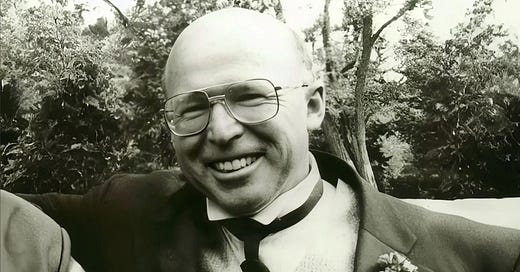(Trigger Warning: This post contains graphic descriptions of violence and may be disturbing to some readers. Reader discretion is advised.)
In 1974, the quiet town of Ossett, West Yorkshire, became the scene of a horrific tragedy that continues to raise questions about the nature of belief, mental illness, and the potential for violence. This is the disturbing story of Michael Taylor, a man whose life took a dark turn after becoming involved with a local church group.
Michael, a 31-year-old butcher, lived with his wife, Christine, and their five children. Struggling with chronic pain and financial difficulties, the Taylors, not previously religious, began attending services at St. Thomas's Anglican Church at the suggestion of a neighbor. They quickly became enthusiastic members, embracing the community and even speaking in tongues.
However, Michael's newfound faith became intertwined with an infatuation with the church's young and charismatic leader, Marie Robinson. This obsession was obvious to everyone, including Christine. After a failed attempt to address the situation privately, Michael's behavior changed dramatically. He began acting as if possessed, speaking in tongues and physically lashing out at Marie.
Believing Michael was demonically possessed, the church leaders, bypassing standard medical and psychological evaluations, decided to perform an exorcism. On the evening of October 5th, 1974, Michael was brought to the church, where, aided by a Methodist clergyman, Father Peter Vincent began the ritual.
What followed was an eight-hour ordeal. Michael thrashed, convulsed, and spat, and was tied to the floor. A crucifix was forced into his mouth, and he was doused with holy water. During the exorcism, Michael’s personal cross was burned, deemed “tainted.” By morning, the exhausted church members believed they had exorcised 48 demons, but claimed three remained: murder, violence, and insanity. They even informed the police of this peculiar detail.
The church leaders, despite their exhaustion, planned to continue the exorcism the following day. Michael was sent home, unaware that Christine had already returned there. During the trial that followed, Michael would say, "Look at my hands. I was banging on the floor. The power was within me. I couldn't get rid of it, and neither could they. They were too late. I was compelled by a force within me to destroy everything living1 in that house.”
Just hours after the initial exorcism, police were called to a report of a naked man covered in blood roaming the streets. It was Michael. He confessed to killing Christine, claiming he had destroyed the evil within her. The scene at the Taylor home was horrific. Christine had been brutally murdered; her tongue ripped out, her eyes gouged out, and her face mutilated. The family dog had also been killed and mutilated.
At trial, Michael’s lawyer argued that the prayer group had exacerbated his already fragile mental state. A clinical psychologist testified that his actions were a direct result of the psychological torment he had endured. Michael was found not guilty by reason of insanity and was committed to Broadmoor, a high-security psychiatric hospital.
The aftermath of this tragedy was filled with unanswered questions. Was Michael truly possessed, or was he suffering from severe mental illness? Did the church's actions contribute to the tragedy? No church members faced charges in connection with Christine’s death. Reverend Peter Vincent was even promoted within the church the following year, a fact that many found disturbing.
Michael Taylor's story is a chilling reminder of the complexities of the human mind and the potential for violence. It highlights the dangers of untrained individuals attempting to deal with perceived demonic possession and the importance of seeking professional mental health support. It's a story that leaves a lingering sense of unease and a profound sadness for the life lost and the family destroyed.
Check out Episode 10 of the Wyrd Wessex podcast here
Or Watch the podcast on YouTube here



